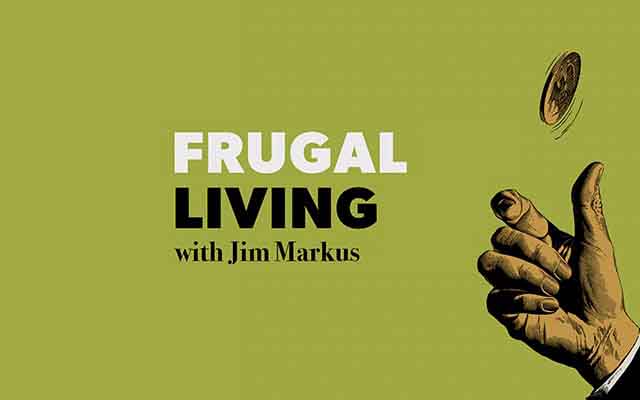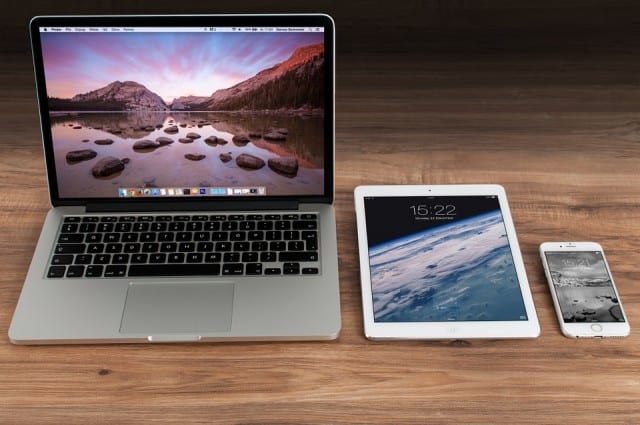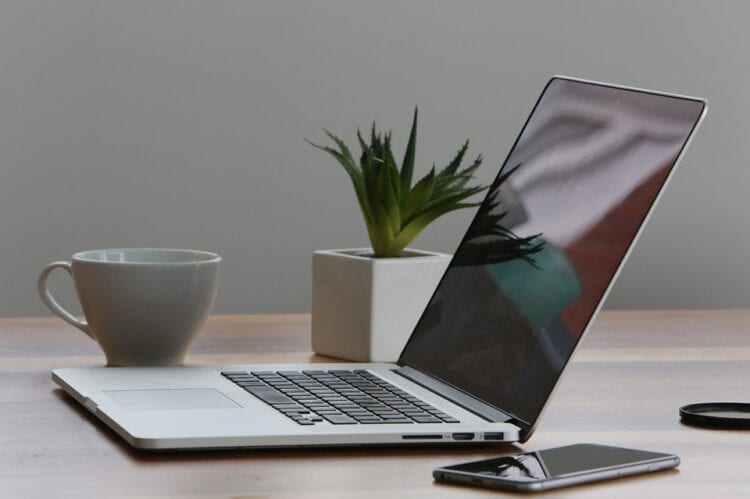How Do You Live Life As A Digital Nomad?
How do you travel the world doing what you love? This week, Jim talked with Isabel Leong about what it means to be a digital nomad. Check out Frugal Living on Apple Podcasts, Spotify, Google Podcasts, Amazon, Anchor.fm, iHeartRadio, or anywhere you go to find podcasts.
The interview focused on two of our most popular topics: travel and entrepreneurship. Leong shares how she got started and what changed once she made it into her career.
As always we have a full transcript of the show below. Looking for more information on travel? We talked with travel expert Mark Jackson about what to expect this summer, and we also found how to go to Disney World for almost free. Want to hear more from Isabel Leong? She blogs at Bel Around The World (and discusses her SEO strategies, which help her monetize her writing).
Read a Transcript From This Episode
Jim:
This is Frugal Living. <music> People embrace frugality for different reasons. Some want security and stability. Others want fewer restrictions. They wanna work wherever and however without reporting to the same building every day. And that brings me to this week’s guest. Isabel Leong is a digital nomad. She’s a traveler and an entrepreneur. She talked to me about travel, how she got started as an avid traveler, and how she supports herself while visiting places most people only dream of. Here’s our conversation. <music>
Isabel:
Hi everyone, I’m Isabel. And I’m a travel blogger at Bel Around The World and a SEO coach as well.
Jim:
So excited to chat with you. I checked out your site. I checked out a lot of your social. You, you’ve been everywhere.
Isabel:
Yeah, thanks! Um, well, I’ve been to over 40 countries now. So there are still a few continents I’ve yet to check off. But yeah, I’ve been, it’s been a pretty fulfilling journey so far.
Jim:
You live a life that I think a lot of people would envy. I think a lot of people like the idea of traveling and seeing as much of the world as you’ve seen. How did you get started?
Isabel:
Well, yeah, I got started when I was on this student semester. It’s called a semester abroad. So I’m from Singapore and I was in uni and sometime in the third or fourth year, you get to go abroad for one semester to finish your studies for that semester. And so I chose France as my, as the country to do my school in.
So that was kind of the first time at 21. The first time I was traveling solo and so far from Asia all the way to Europe. So that got me really excited. I, yeah, I got everything prepared. I researched a ton of stuff. And so I thought that, you know, during my travels, I wanted a place to document my journey. I wanted a place to share my research that I’ve done before for other people who might be going through the same thing.
And so that’s how my travel blog Bel Around The World was formed. Yeah, and it sort of just happened from there. Like, it was a six months full of adventures. Like, I remember, I think I went to 55 cities.
Jim:
Was this during that semester abroad while, while you were…
Isabel:
Yeah.
Jim:
Wow!
Isabel:
Yeah, while I was studying. So it was like I chose to pack all of my classes in three days. And then the remaining four days I would be out gallivanting somewhere.
Jim:
You went all over. Can you tell me a little bit about how you made that choice to go to France and where you ended up?
Isabel:
I ended up in this France, uh, university, which was in Normandy. It wasn’t super central. Like, it wasn’t in Paris where flights were accessible, things like that. So it did presented some more complications. Like, I would have to take–it’s a car-ride-sharing app. So I would have to, you know, look at who’s going from my little student town to, to somewhere where there is an airport.
And sometimes in Europe, they’re known to have super-cheap bus companies. Like, I remember taking a one-Euro bus from France to Belgium, something like that. So I would always get ho–get ahold of all these opportunities to travel and then couch surf because I was on a student budget. So I’m constantly looking at couch surfing gigs to see, yeah, if I could couch surf in a new place for free.
Jim:
How much of this was spur of the moment and how much of this was planned?
Isabel:
Ooh, back then I was really new. I was really green into traveling. So a lot of it, like… If you ask me today, I would book my Airbnb one day in advance. But back then I think I did have some planning and also because I was in school. So sometimes I would have down times for me to do my research and plan ahead.
Jim:
So you’re saying back when you didn’t have as much experience, you spent more time researching than you would now.
Isabel:
Yeah, absolutely. I remember having this five- or seven-day itinerary to Amsterdam with a friend. And it was a Google spreadsheet and everything was color coded. And it would be where we would eat and what we would do for what days. So that was really… Like, I think I still have a copy of it on my blog when I first, um, started, like, traveling. So that is kind of crazy.
Jim:
Can we dive a little bit deeper into that? Can you give me an idea of what, what are some of the specifics that you would’ve planned for a week in Amsterdam then? And then can you show me a little bit more of what a trip now looks like?
Isabel:
Yeah, for sure. So the first things I would cover definitely was accommodation. So I would definitely plan ahead in advance. Look at booking sites or Airbnb and make sure that, you know, like, the location is good, it’s safe, the host is trustworthy, things like that.
And then I would go into researching the different places, the different highlights, the different tourist attractions in, in a city that I’m gonna visit. I would bookmark it on Google, Google Maps so that I have all the stars. And when I zoom out, I have an overview of all the different places I wanna go.
And based on the number of days I have, say if I have five days, I might section each, I will, I would split the entire overview into five different parts so that I know where to visit in each day. This includes day trips from Amsterdam, we would go see the windmills. So yeah, this includes day trips as well.
Today I would just, um… A last trip, my last trip to the Dominican Republic, we had three weeks. And basically we wanted to cover as much of, um, the Dominican Republic as possible. So there was some Airbnbs that we booked ahead in advance. And then that is the open itinerary. So I would just go there, talk to the host, talk to local people, see what’s going on in the area. And then in the spur of the moment, maybe today it’s a great day or today it’s rainy so we’re gonna stay in and work.
We would, yeah, we would just visit based on the local recommendations. I don’t actually do research about travel as much anymore, especially with the micro attractions to visit. Whereas, like, before, say I’m going to the Dominican Republic, I would still do my research. But this time I like to go to forums.
I like to go to groups and ask people, “Oh, who’s been to the Dominican Republic? What kind of attractions do you recommend?” And then I get real-time updates and recommendations. And from there I still bookmark the places that I have to go, which gives me, kind of, a rough idea on the route that I will travel. But yeah, but I don’t go into really specific details this time.
Jim:
It sounds like when you first started you were using a lot of those surface-level Google searches, “What should I see in Amsterdam? What should I see in the Dominican Republic?” And then making sure you hit those. And now that you got more experience, it sounds like you’re relying on local, you know, your host or the people you meet there and the people you can meet that have been there ahead of time on forums. So you know where to go to have those conversations. Am I understanding that right?
Isabel:
Yeah, absolutely. And also because I was 21 back then, and it was, kind of, like, bucket list items that I had to check off because I’m only gonna be visiting Amsterdam for one time, the rest of my life, for the rest of my life. Yeah. That came with more haste, which is why I wanted to cover all my grounds back then. But now with the life that I’m living, because I travel full time, I’m slowly starting to take it slow. And also because I’ve traveled more widely now, it is okay for me to skip certain attractions because sometimes you can suffer from travel burnout as well. So I prefer to take it slow these days.
Jim:
That’s very smart. And you mentioned the life you live now, you’ve built a life around travel. This is a passion of yours. A lot of our listeners are gonna be wondering how can they do something like that? Like obviously COVID and the rise of the remote work environment has expanded. So it’s a lot easier now for more people to get into this. What advice do you have for someone who wants to do what you do?
Isabel:
Yeah, for sure. I mean, not everyone is into, is going to go into the travel-blogging track. Think about tapping into some of your skills that you have. Like, say you’re good at graphic designing or you’re good at programming. Maybe you can start from there. Think about the skills and look for jobs that are related, that are looking for skills like yours to start with.
Jim:
Are there specific sites where you can find these types of communities?
Isabel:
Hmm, I like to go on Facebook groups. So there are a ton of Facebook groups that are travel themed. You can start from there. That’s where, that’s, kind of, my primary source that I go to whether it’s for traveling or whether it’s for looking at, connecting with other fellow nomads.
Jim:
Let’s get a little bit more specific into the way that you’ve built this. Your life specifically as a travel blogger, does that pay for your travel? How, how do you afford to travel the world?
Isabel:
Yeah. I would say travel, my travel blog is the primary source of income. And it is through doing blogging so many years that I’ve accumulated different digital marketing skill sets, like social media marketing or content marketing or email marketing.
So it, kind of, is an all-encompassing role. So travel blogging is my main source of income. And then I sometimes would get people requesting to have me help them with the digital marketing work. Like, for example, I would be traveling in Mexico. I was working with a travel tour company in Mexico.
And then they found out that I was also helping other people with, like, SEO with beefing up the website and making sure their online presence is seen. So that was when they started engaging me. So it’s kind of like my lifestyle is built around travel, but I’m able to do the things that I love. And I’m able to build up all these skill sets that are, kind of, interconnected in a way.
So yeah, I would say these are two forms of income. And then I’ve also recently, during the pandemic in 2020, I started creating a course, creating courses, teaching people how to grow their traffic organically with content.
Jim:
You’re a small business owner. You’re an entrepreneur. We talk to a lot of people who start businesses in vastly different areas. But what makes yours unique is most of the business owners we talk to build a business in a specific place. And they build their business around, you know, living in wherever they live. You’ve built a business around travel. Your business travels with you, and now you consult and you teach courses that are other ways that you support yourself.
Isabel:
The blogging thing was not planned really. Like, I’ve always had the dream to be able to blog full time. But coming from Singapore back then, I had a limited audience. I thought it would really just be limited to my Singapore audience whereas all the bigger bloggers are coming from the U.S.
Jim:
There are a number of challenges that face someone trying to start a business, especially blogging. Building an audience is probably one of the first things that is gonna be a hurdle for anyone. Especially like you mentioned, American travel bloggers may have built-in audiences in other areas. How did you start? Like, how did you get your first thousand people reading your blog?
Isabel:
Yeah. At first, remember, remember I was traveling throughout Europe, so I had tons of content. So I simply wrote whatever I wanted to, like itineraries that I had researched, my New Year countdown experience in Paris. I remember my first viral post, which is still trending on the first page of Google today, was how to create a Google Maps itinerary with Google Maps, things like that. And, also posts that are really comprehensive. I started focusing more on what Google wants, what the audience wants to see rather than what I want to blog about.
Jim:
It sounds like you’re starting very organically. You’re starting very much with your interests. Then you’re looking at what you’ve done and seeing how people are engaging with it and then making your future decisions based on where you’re seeing the most engagement.
Isabel:
Yeah, yeah. Absolutely. Like, well, most people nowadays, they are setting up a blog in the, in a bid to monetize it and be able to earn passive income from it like I do now.
Jim:
Okay. So if someone wants to follow in your footsteps–they’ve started a blog, they’re starting to see traction, they’re starting to evaluate where they’re seeing the most performance–I, I guess where does, where does SEO come into play here? So SEO is, like, the foundation of your business, right?
Isabel:
Yeah, because when I really study my analytics, it can come from different sources. It can come from Google traffic. It can come from Pinterest or social media, like Facebook or Twitter. It can come from YouTube. So when I studied my traffic, I found that the majority, like almost 75%, in fact, of my traffic, comes from Google search.
So basically it’s, like, people searching “what to do in Amsterdam for three days.” And they come across my article because it’s at the top of Google. So that’s when I found that to make the best use of time… Because for instance, Pinterest, it requires a lot of time designing the pins, posting the pins, and also engaging. So the most efficient way I found is to really focus on organic traffic, which is traffic coming from Google. And that’s where SEO comes into play.
SEO, it means such engine optimization. It basically means optimizing your content for Google. And so with a variety of factors, you would be optimizing your content so that it will appear on the first page of Google when people are searching for certain keywords. And yeah, and that was how I went about growing my traffic.
Why I really focus and tell people that traffic is the number one thing to focus on if you’re growing a blog and trying to monetize it is because without traffic you’re not gonna get advertising money. Without traffic, um, if you wanna pitch to brands, you have to show them your accolades. You have to show them your traffic numbers, your engagement levels. So without traffic, you wouldn’t have all of that. And you wouldn’t be able to be in a position, where you’re in a position of authority to work with these brands.
Which is why, um, I like to focus on SEO because it’s, like, everybody wants an efficient way to grow their traffic. And SEO I found is the most efficient way. Because, for example, I’ve written a post about the best places to visit in Greece in October many years ago. And every time when summer approaches, it still ranks as number one. My traffic starts shooting up as summer approaches. So this is something that I can write a few years ago and leave it on its own. And it was still bringing traffic for me because it’s seasonal.
Jim:
We talk a lot about building passive income. And it sounds like that’s what you’re doing by leveraging SEO. You’ve already created the content. You’ve done the work. And now because it ranks on Google, every year you have a traffic bump. To bring this back into the travel world, I’d love to hear a little bit more about your experiences there. Where are you now? Where are your favorite places to have visited, that kind of thing?
Isabel:
Yeah. I’m right now in Costa Rica actually. I landed about a week ago from traveling the Dominican Republic for three weeks. And it’s, kind of, relieving to finally have a base to settle down and get work done, you know, instead of procrastinating. Yeah, I’ve been traveling around South America the past year because of the pandemic.
It kind of forced me to travel full time. Like, I cannot go back to Singapore anymore. And I’ve already traveled so far all the way to Latin and South America. So it, kind of, gives me a good excuse to do some slow traveling and visit a continent that I’ve never, uh, visited before. Some of the best places that I really enjoy.
The first one would be New Zealand because I spent a considerable amount there. It was actually my first time. This was my first place that I lived in outside of my home country, Singapore. I mean, compare, compare that to living in a tropical city in Singapore. That is amazing. That’s like a dream, a total dream.
And also the atmosphere is just, you’re surrounded by nature all around. You’re waking up to nature calls instead of cars. Yeah, because New Zealand is such a beautiful landscape so there’s plenty of nature around. And the pace of life is also very different as compared to Singapore. So it’s kind of, it was a nice breath of, a fresh breath of air.
Jim:
You are kind of a Google expert. And I don’t just mean with SEO. But more than once you’ve talked about using Google’s technology, existing technology, free-access technology, to help you find either a plan–where you’re going to go–or to find restaurants when you’re there. I also noticed on your Instagram recently, you had advice on showing people, like as a solo traveler, where you are using Google Maps.
Isabel:
Yep.
Jim:
You, you just have a, a lot of Google…
Isabel:
Hacks.
Jim:
Tips. Yeah, Google tips and hacks.
Isabel:
Yeah, I would say so. I mean, because Google’s so omnipresent and there are a lot of features that we don’t really know of. And they have also tried to make it as, you know, they try to make people addicted to Google. So it does have a lot of untapped functions that we can use as a traveler, whether we are offline or online. <music>
Jim:
This conversation made me want to plan my next trip. It also reminded me of some of the freedom financial independence offers. So thanks to this week’s guest, Isabel Leong. You can find her at BelAroundTheWorld.com. That’s Bel with one L. Today’s show was edited by me, Jim Markus. If you enjoyed it, please leave a review on iTunes. And as always, you can find our show notes and transcript at Frugal.fm. <music>
More About Frugal Living With Jim Markus

This episode was sponsored by Aosom and Highlights. Use our code FRUGAL15 for an extra 15% off your order at Highlights.com.
Frugal Living is a podcast for smart consumers. How do you spend less and get more? The show, sponsored by Brad’s Deals, features interviews, stories, tips, and tricks. Jim Markus hosts season five, out now.
The post How Do You Live Life As A Digital Nomad? appeared first on The Brad's Deals Blog.






